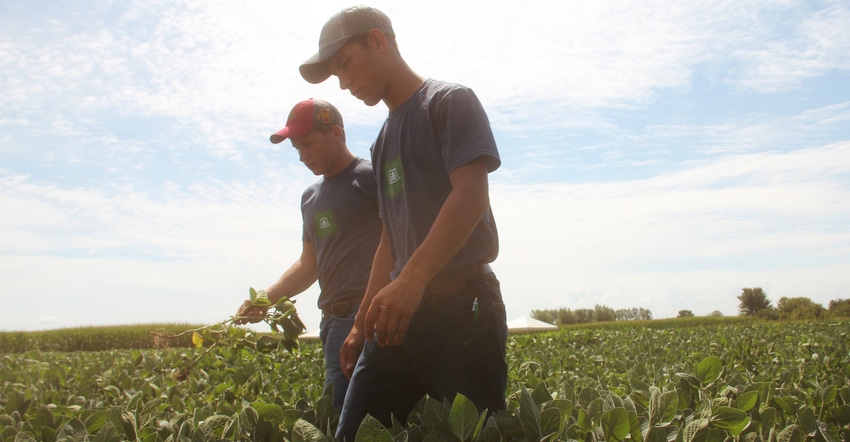May 23, 2019

Crop scouting is a practice that can provide a major return on investment, but the practice is not widely used by farmers to make decisions. Many farmers do not scout their crops because it takes time and a knowledge of pests. However, scouting can increase an understanding of what is happening in fields to make better decisions.
The basic principles of crop scouting include the following:
recognize difference between normal and abnormal crop growth, and how environment impacts it
understand pest biology to know what to look for and when
understand economic thresholds and economic injury level to know when to treat the crop
know history of the field and the farmer’s future goals
Normal vs. abnormal
Understanding and recognizing crop growth and development stages can provide clues to determine if things are on track or being influenced by environmental conditions. For example, in mid-May, we were experiencing delayed emergence in corn and soybeans due to cold, wet soils.
ISU publications “Corn Growth and Development” and “Soybean Growth and Development” are used to accurately stage development, and they integrate research and management practices into the information they provide. Each is available through the ISU Extension store referenced below.
Example of pest biology
A table available online at Insect Pest Crop Scout Calendar offers a summary of insect pests common to Iowa, although not all-inclusive. Understanding whether an insect overwinters in Iowa or migrates to Iowa is important for management, and knowing the developmental stages as related to degree day accumulation provides useful information on when to expect to scout for these insects.
Disease presence in crops is determined by the three legs of the disease triangle. Do we have a susceptible host, such as corn or soybeans? Is the pathogen present? Do environmental conditions favor disease development?
Correct identification of the disease as well as knowing the incidence (percent of plants diseased) and severity (percent of tissue damaged) are all critical to make treatment decisions. The guides listed below serve as excellent resources for disease identification and development timing.
Economic threshold vs. injury level
Understanding how these two terms relate and what they mean for treatment decisions is important for insect management. Economic threshold (ET) is the point at which action should be taken (treat for insects) to avoid reaching the economic injury level (EIL), the point where the lowest population density will cause economic injury or yield loss.
For example, the ET for soybean aphids is 250 aphids per plant. This threshold warrants treatment to avoid reaching the EIL of 670 aphids per plant that causes economic injury or yield loss.
Field history and goals
Serving as your own crop scout gives you knowledge of your field history, products used and your future goals.
Keeping sound records can provide important clues as to whether you can anticipate a herbicide failure due to resistance if a herbicide has been used repeatedly, or Bt trait failures if the same traits have been used repeatedly to manage for rootworms. This requires repeated observation of fields such as evaluating weed control or digging corn roots to score root pruning.
Helpful resources available
Iowa State University Extension and Outreach has many resources that can be used in the field to diagnose issues. The following publications may be ordered from the Extension store by visiting store.extension.iastate.edu:
Corn and Soybean Field Guide, IPM1
Weed ID Field Guide, IPM3
Soybean Growth and Development — Soybean Staging, Crop 3093A
Corn Growth and Development — Corn Staging, Crop 3094A
Field Crop Insects, CSI 14
A Farmer’s Guide to Soybean Diseases, IPM77
A Farmer’s Guide to Corn Diseases, IPM76
If you are not sure what you are seeing in a field, consult a professional agronomist or crop consultant, or submit samples to the ISU Plant and Insect Diagnostic Clinic.
Rieck-Hinz is the ISU Extension Field Agronomist for north central Iowa. Contact her at [email protected].
About the Author(s)
You May Also Like






